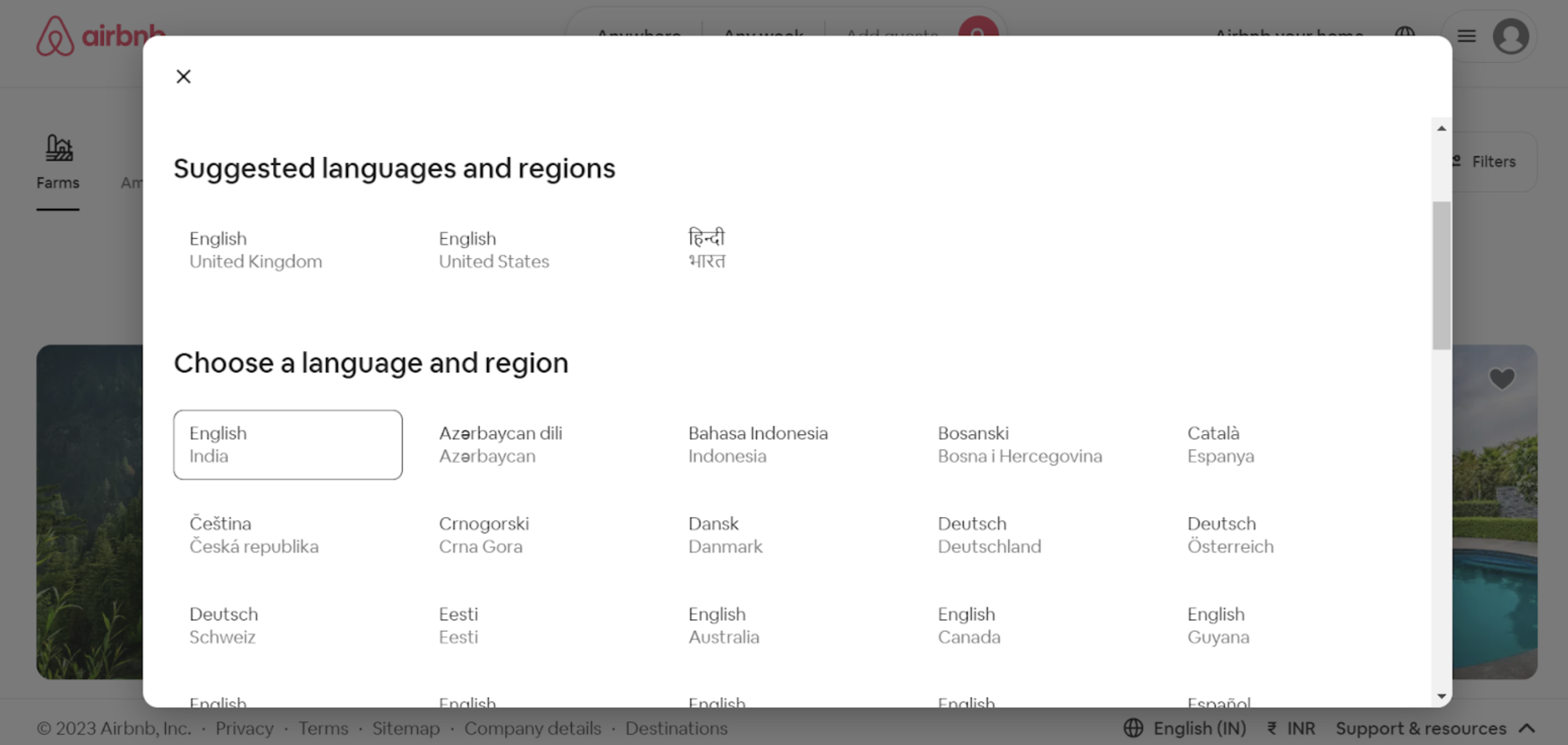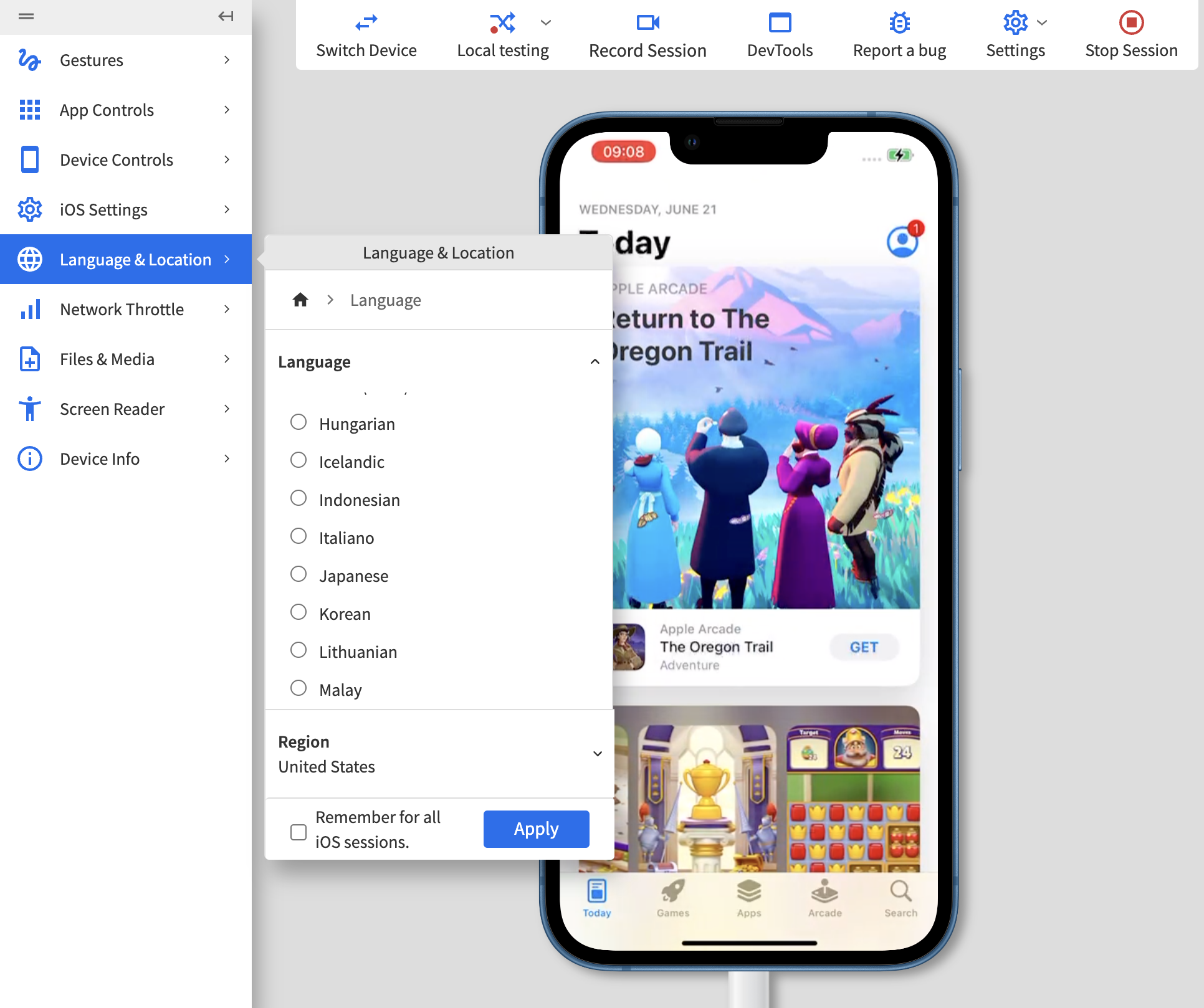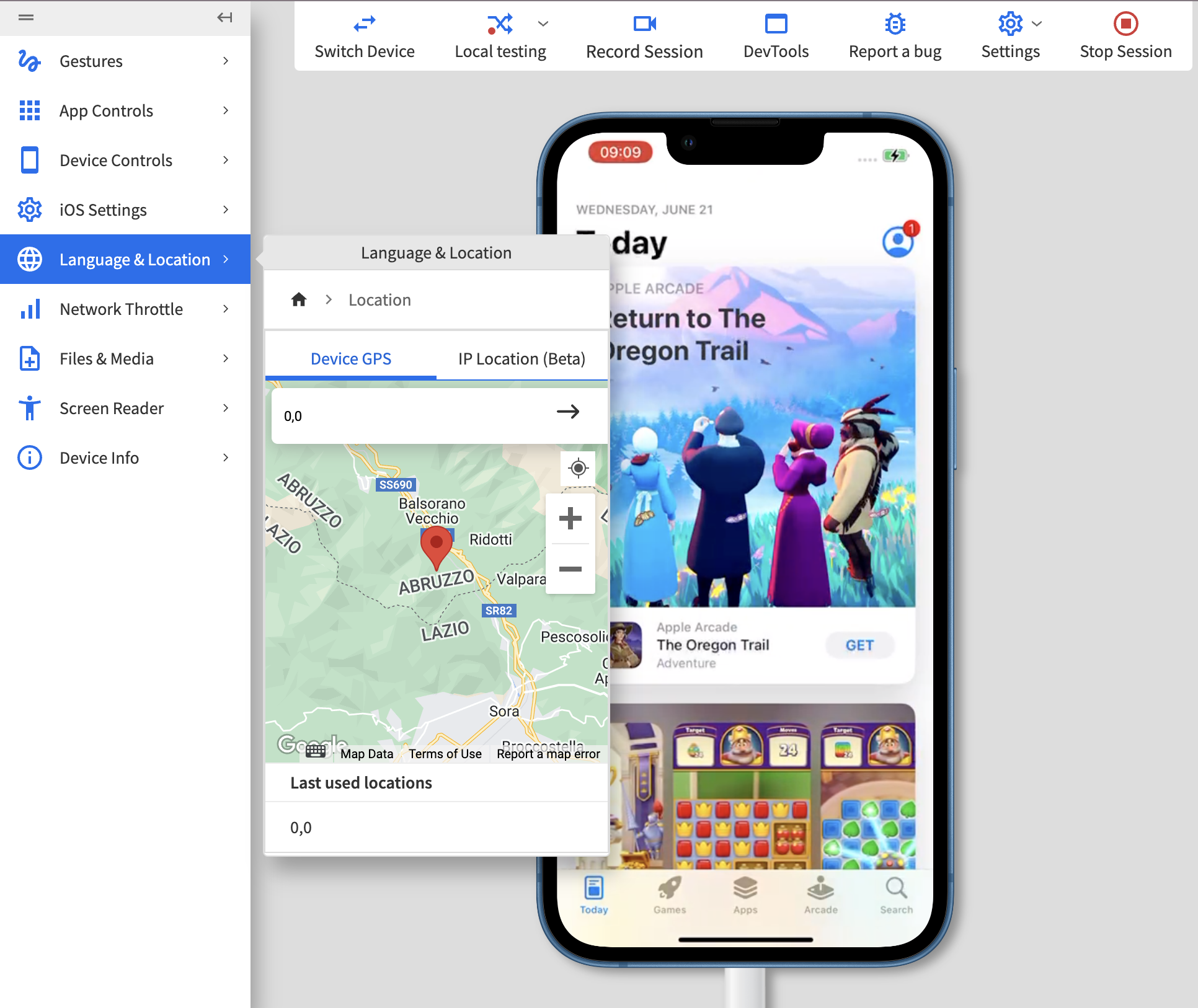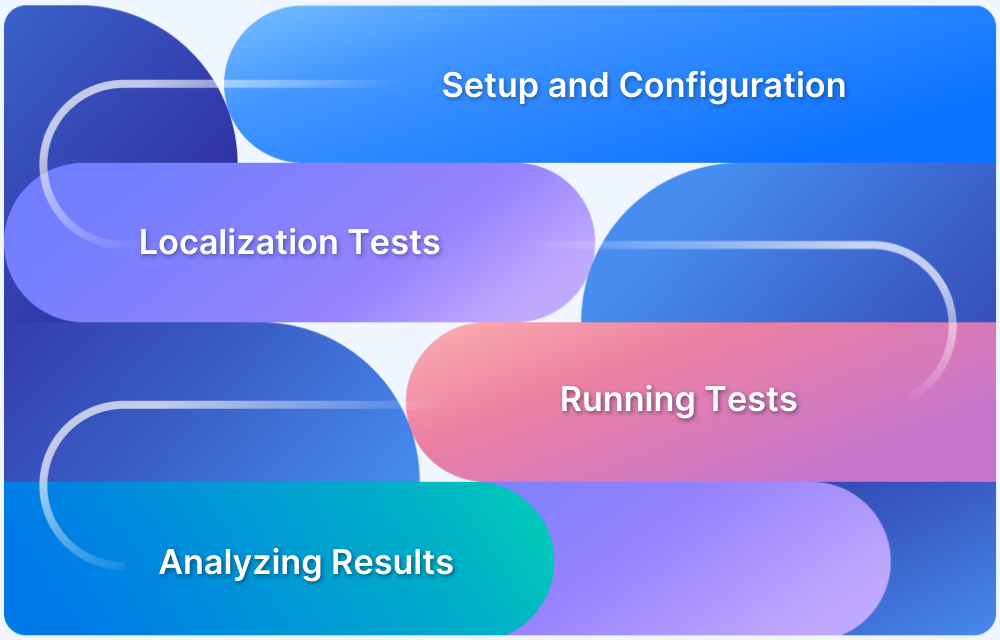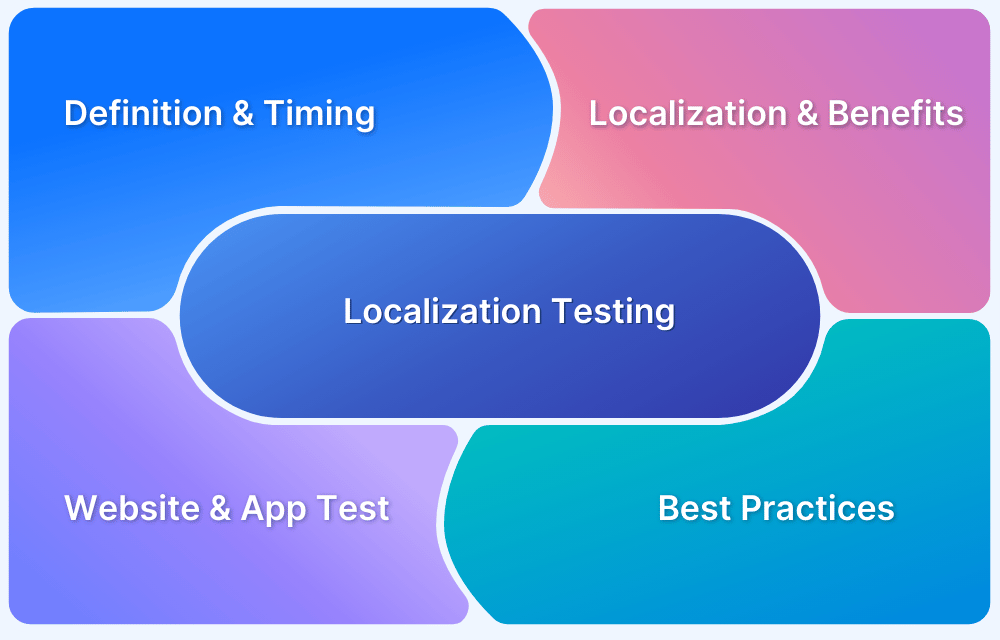App Localization 101: Why it’s Essential for App Success?
By Pawan Kumar, Community Contributor - December 19, 2024
Application localization is the process of customizing material on a web server or mobile app by translating it and ensuring that it satisfies the requirements of a certain targeted location.
Because mobile app localization typically involves less content than web app localization, it is less expensive. The material is also available on the Apple App Store and Google Play for iOS and Android devices.
Localization methods are largely standardized, and the engineered files are all typically.xml files. Web apps may include far more material than mobile apps, reducing the importance of selecting readily understandable content. This level of content translation generally raises the cost of web app localization significantly.
- What is App Localization?
- Why is App Localization Important? (Advantages)
- Types of App Localization
- App Localization Strategy
- Which parts of your App should you Localize?
- Top Languages for Localization
- Challenges in App Localization and How to Overcome Them
- How to Localize your App?
- Best Practices for App Localization
- How to test App Localization?
- Step 1: Sign in to BrowserStack
- Step 2: Launch App Live
- Step 3: Select a Real Device
- Step 4: Simulate Localization Scenarios
- Step 5: Validate Regional and Functional Localization
- Step 6: Test Performance in Real-World Scenarios
What is App Localization?
The practice of adjusting an app’s user interface and functionality for users in multiple target markets is known as mobile application localization.
Localizing mobile apps extends much beyond mere translation: Localization ensures that every asset of your app—be it user interface (UI) elements, specific features, in-app copy, graphics, or app store descriptions—is tailored to users’ cultural preferences, habits, or expectations.
Airbnb is a wonderful example of thorough app localization—for each of its 220+ regions and 60+ languages, the app has localized everything from the app UI and content to the various payment options.
Why is App Localization Important? (Advantages)
While English is widely regarded as a “lingua franca,” or universal language that facilitates communication between various native languages, research indicates that consumers prefer material in their native language.
For firms with worldwide ambitions, localizing mobile apps is a no-brainer. There are billions of app users worldwide who cannot be reached by an unlocalized app—localization allows you to target app users in every nation worldwide and maximize your app’s visibility and coverage.
Some of the commercial advantages of app localization include:
- Entering new markets: The key to app market expansion is app localization. Consider Airbnb—the firm that began in its founders’ flat is now present in over 220 countries worldwide, with a market capitalization of $75 billion.
- Increasing App Engagement: Users like app content that is personalized to their own interests and requirements. It makes a significant impact on how users interact and may help you increase engagement and loyalty.
- Improving downloading apps and transparency: According to research, app store descriptions written in the local language may boost app downloads by up to 38%.
- Increasing sales: Investing in localization implies that your market share grows considerably with each nation you enter, as do your income sources. Although there is no one-size-fits-all localization ROI model, Fortune 500 companies are said to generate more revenue when they invest in localization.
Types of App Localization
It may be done at multiple levels in the same way that you can design simply the essential functions of an app to address a specific problem and fulfill a certain niche (known as a minimal viable product (MVP)) or go all-in with your development.
According to their capacity, there are two primary forms of app localization to consider:
1. Minimum Viable Localization (MVL)
MVL tries to localize just the app’s essential features or content and store summaries and information. Because it requires fewer resources and labor than full app localization, this type of app localization is ideal for early-stage app startups that prioritize a quick time to market and a high ROI.
Evernote, a popular note-taking software, launched in China in 2012 with a simplified product, a local-language brand name—Yinxiang Biji (, which means “memory thoughts”), and a basic linguistic pack.
2. Full App Localization
Global app enterprises that are devoted to building a completely localized app and maximizing their app’s reach, user base, income potential, and ROI should explore full app localization. This entails tailoring every component of the software to each target market, including app store localization. Complete app localization guarantees that users in different markets feel comfortable using your app.
Flipkart is a wonderful example of comprehensive app localization. On Flipkart, we can pick languages based on our region and area. With too much regional language variation in India, brands can alter the app visibility in multiple languages.
App Localization Strategy
A localization strategy is a distinct market approach used by a corporation to handle purchasing patterns, consumer behaviors, and general cultural variations in each area where its products are sold.
Creating country-specific localization strategies ensures that clients from other countries receive the same high-quality service that they would expect from a local company.
So, what goes into developing a company’s localization plan of action?
- App / Site marketing – like in some countries, customers prefer mobile surfing over desktop browsing, which may have an influence on your site development plan. High-quality content translation and local SEO auditing assist to bridge the potential interaction gap between organizations and customers in various native markets. Consistency in domain structures also aids in the maintenance of a strong worldwide brand.
- Standards of culture – It is critical to fulfill cultural standards, such as how to properly treat your consumers. Honorifics are always expected in some nations, such as adding the gender-neutral suffix “sama” while engaging with consumers in Japan. In some circumstances, the amount of space in online forms may need to be adjusted to accommodate reading aids or numerous middle names.
- Purchase options – Your purchasing experience must be tailored to each nation, including the currency used and payment methods. Credit cards, for example, are not generally utilized in Germany, therefore you should provide an alternate payment method for these customers. Multiple alternate currencies also mean that an American ex-patriot, for example, is able to pay in US dollars even if he or she lives in another country.
- Standards of Culture: Adapt to cultural nuances by honoring local address formats, date/time styles, and appropriate salutations. Ensure language style aligns with local customs, adjust layouts for reading patterns, and respect taboos to avoid cultural missteps.
- Purchase Options: Provide payment methods suited to local habits, such as digital wallets or cash-on-delivery in regions with low credit card use. Offer multiple currencies, localized pricing, and region-specific return/refund policies to create a seamless purchasing experience.
- Language and Regional Variations: Focus on regional dialects to ensure content feels native, using professional translation services for accuracy. Account for text expansion or contraction in design to accommodate language-specific needs.
- Legal and Regulatory Compliance: Ensure compliance with local laws, such as GDPR or CCPA, for data privacy. Adapt product descriptions, terms, and advertising to align with regional regulations and standards.
- User Support and Customer Service: Provide multilingual customer support, localized FAQs, and help desks to address user issues in their native language. Align support hours with local time zones and peak activity periods.
Which parts of your App should you Localize?
To ensure a seamless and engaging user experience, localization should focus on adapting several key areas of your app. Here is a breakdown of the essential components to localize:
1. Language and Text Content
- Translate all user-facing text, including menus, buttons, instructions, error messages, and pop-ups.
- Adapt text for regional dialects and language variations (for example, British vs. American English, Latin American Spanish vs. European Spanish).
- Ensure accuracy in translations and avoid literal interpretations by using professional localization services.
2. Date, Time, and Calendar Formats:
- Adjust date formats (for example, MM/DD/YYYY in the U.S. vs. DD/MM/YYYY in most other countries).
- Localize time formats, including 12-hour vs. 24-hour clock preferences.
- Adapt calendars to reflect regional workweeks and holidays.
3. Currency and Payment Options:
- Display prices in local currencies and ensure compatibility with region-specific payment methods.
- Support alternative payment options such as digital wallets, bank transfers, or cash-on-delivery where credit card usage is low.
- Account for local tax systems and VAT in pricing displays.
4. Units of Measurement and Numeric Formats:
- Adjust units of measurement (for example, metric vs. imperial systems).
- Format numbers and decimals according to regional conventions (for example, 1,000.00 in the U.S. vs. 1.000,00 in many European countries).
5. Address and Contact Forms:
- Redesign input fields for address formats that differ globally, such as zip codes, state/province fields, and phone numbers.
- Allow for longer names or multiple middle names common in certain cultures.
6. App Store Listings and Marketing:
- Localize app descriptions, keywords, and titles for better discoverability in regional app stores.
- Adapt promotional banners and notifications to highlight region-specific events or offers.
7. Notifications and Alerts:
- Tailor notifications and in-app alerts to match local language, time zones, and cultural norms.
- Avoid automated messages that may come across as impersonal or irrelevant to local users.
8. User Support and Help Resources:
- Provide localized FAQs, tutorials, and customer support in the user’s native language.
- Align support channels with regional preferences, such as offering WhatsApp or WeChat support in countries where these platforms are popular.
9. Legal and Compliance Elements:
- Adapt terms and conditions, privacy policies, and disclaimers to meet regional legal requirements.
- Ensure compliance with local regulations like GDPR, CCPA, or other data protection laws.
10. Search and SEO Features:
- Optimize search functionality for local languages, including support for different scripts and input methods.
- Localize keywords and metadata to improve app discoverability in regional markets.
Top Languages for Localization
The 14 most common target languages for orders with English as the source language stayed unchanged from the previous year.
- Languages in high demand include French (France), Italian, German, Portuguese (Brazil), Spanish (Spain), Japanese, Korean, Simplified Chinese, Dutch, Turkish, Polish, and Russian.
- The abbreviation FIGS stands for the four most common languages for localization: French, Italian, German, and Spanish.
- Developers may do more than merely penetrate four nations’ marketplaces by localizing software, applications, and games into the “classic four” languages.
- Other than Italy, Italian is the official tongue in three other countries, and German is the official language in five countries other than Germany.
- Not to mention the fact that Spanish, French, and their derivatives are spoken in dozens of nations on both sides of the Atlantic
To choose a language for game localization, evaluate the markets with the largest purchasing potential first. The following facts are from Newzoo’s 2022 insights.
| Region | Revenue (USD) | Players |
|---|---|---|
| 1. China | 45.8B | 744.1M |
| 2. United States | 45.0B | 209.8M |
| 3. Japan | 20.0B | 77.1M |
| 4. South Korea | 7.9B | 34.1M |
| 5. Germany | 6.6B | 49.5M |
| 6. United Kingdom | 5.5B | 38.5M |
| 7. France | 4.1B | 38.8M |
| 8. Canada | 3.4B | 22.0M |
| 9. Italy | 3.0B | 36.1M |
| 10. Brazil | 2.6B | 102.6M |
Challenges in App Localization and How to Overcome Them
Localization of your latest software or game isn’t always as easy as it should be. Localization is a collaborative activity that includes not just translators and content managers but also developers. Continue reading to learn about three typical localization difficulties that development teams may face:
1. Excessive Manual Load
Software development is a time-consuming task that requires significant focus. The last thing a development team needs is to become mired down in a never-ending set of manual activities.
When using enormous Excel spreadsheets to localize, developers must copy-paste each string from their code into a spreadsheet, then manually import and export those spreadsheets.
When translations are updated or new strings are added, they must do it all over again — and again, and again, until the game or app is complete.
2. Strings that have been hard-coded
Hard-coded characters are lines of text that are set up in the code of your software or app. This makes localization considerably more difficult and time-consuming, with possible performance consequences.
- Maintaining version control is quite hard when each string in the code must be manually changed. And every time there’s an update, you’ll have to alter each occurrence of a particular string.
- Localization requires an increasing amount of time. You must locate strings, identify which ones require translation, copy-paste them into an external resource, localize them, and then put every translation in the source code.
- If strings are not replicated in the same manner across a project, you may get display difficulties or other performance concerns.
- Given that the code may be harder to figure out, hard-coded strings can make future product updates more difficult.
Inexperienced programmers are more likely to hard-code strings. If the product team does not intend to localize their program, you may come across hard-coded strings.
3. Localization quality assurance delays development
The conventional way to localization quality assurance (LQA) is to have testers walk through your game or app to ensure that all translated strings are shown appropriately. If they discover an error, they must take a screenshot, upload it, create an issue, and then link the screenshot to the relevant string.
The same is true for voice-overs, movies or gifs, and other multimedia items that require localization on a regular basis. Testers must examine the project in one location before reporting any issues in another. All of this back-and-forth adds up rapidly.
4. Keeping version control
Version control is critical for agile and effective development. Teams can work on many features at the same time by branching: creating a copy of a project that is distinct from the primary, or master, version.
This method provides developers and content producers with a risk-free environment in which to experiment without fear of ruining the entire project. The new material is then merged back into the master branch when it has been completed and verified for bugs.
How to Localize your App?
In the beginning, let’s start a new Android project using Android Studio’s “Empty Activities” style. Let’s create a project with the following settings for illustration objectives:
Name: LocalizationApp Package name: com.example.LocalizationApp Language: Kotlin Minimum SDK: API 31
Include some elements
It’s time to fill this empty MainActivity with some material. Edit the activity_main.xml file, which can be found in the app/src/main/res/layout directory. Put a basic TextView in there with the message “Hello world!”:
<?xml version="1.0" encoding="utf-8"?> <LinearLayout xmlns:android="http://schemas.android.com/apk/res/android" xmlns:app="http://schemas.android.com/apk/res-auto" xmlns:tools="http://schemas.android.com/tools" android:layout_width="match_parent" android:layout_height="match_parent" android:orientation="vertical" android:padding="10dp" android:gravity="center_horizontal" tools:context=".MainActivity"> <TextView android:id="@+id/test_text_view" android:layout_width="wrap_content" android:layout_height="wrap_content" android:text="Hello world!" android:textSize="26sp" /> </LinearLayout>
But there’s a problem: the string value “Hello world!” is reflected immediately within TextView‘s layout explanation. As you may be aware, hardcoding string values into an application’s code is a fundamentally terrible practice. Furthermore, you may require this text to be edited rapidly if the user of your Android localization application decides to modify the app’s languages.
Linguistic assets
How about adding certain language assets with localization-related data to our Android app? These will serve as static assets that contain language content for multiple languages.
The Android SDK includes a mechanism for storing Android app resources. Following this strategy, check within the res/values directory for a strings.xml resource file containing the text strings utilized in our android-i18n app.
Let’s create a new string asset in strings.xml to contain the string “Hello world!”:
<?xml version="1.0" encoding="utf-8"?> <resources> <string name="app_name">LocalizationApp</string> <string name="hello_world">Hello world!</string> </resources>
Take note of the hello_world key, which refers to our sample text string value “Hello World!” It’s fine to do so in simple situations like this, but please make it a practice to give your keys self-explanatory names. Check out our blog post that summarises some best practices for working with translation keys.
Increase the number of resources
We can use Android Studio’s l10n support to add another resource file easily. Let’s use Android Studio’s resource file wizard to generate a new resource file for the Latvian language.
Right-click the res folder and select New > Android resource file. The wizard will allow you to select from a list of potential resource qualifiers for your new folder. The system uses qualifiers to determine which resources to load according to the user’s device setup, such as language, screen size, country code, etc. Remember that the same qualifiers may also be used for other sorts of resources, such as photos or layouts.
To understand additional app resources, consult the Android documentation.
Second, choose Locale from the list of eligible qualifiers and add it to the list of qualifiers. Select “lv: Latvian” from the language list to add a Latvian language resource file. We may leave the Specific area-only parameter at its default value of “Any region” because we won’t be limiting our localization to specific locations in this example.
Finally, change the File name to “strings.xml”. You’ll note that Android Studio has pre-populated the Directory name with values-lv:
<?xml version="1.0" encoding="utf-8"?> <resources> <string name="app_name">LocalizationApp</string> <string name="hello_world">Sveika pasaule!</string> </resources>
Refer the resources
Let’s reference the resources we have for both languages after we’ve correctly configured them in our TextView. Open the TextView layout in res/values/activity_main.xml. Within the android:text, use the resource key hello_world TextView‘s text property:
<TextView android:id="@+id/test_text_view" android:layout_width="wrap_content" android:layout_height="wrap_content" android:text="@string/hello_world" android:textSize="26sp" />
Refer resources dynamically
If you need to change the characters in a Text View on a regular basis, you may do it programmatically in the MainActivity.kt file by following these steps:
package com.example.LocalizationApp
import android.os.Bundle
import androidx.appcompat.app.AppCompatActivity
import android.widget.TextView
import androidx.appcompat.app.ActionBar
class MainActivity : AppCompatActivity() {
override fun onCreate(savedInstanceState: Bundle?) {
super.onCreate(savedInstanceState)
setContentView(R.layout.activity_main)
val actionBar: ActionBar? = supportActionBar
actionBar?.setTitle(R.string.app_name) // 1
val textView = findViewById<TextView>(R.id.test_text_view)
textView.setText(R.string.hello_world); // 2
}
}Important points to consider:
- Set the string resource app_name as the title of this activity’s ActionBar.
- Set the string resource hello_world as the text of test_text_view.
Our application has now been successfully translated into two languages.
Best Practices for App Localization
Localizing your app effectively requires careful planning, execution, and ongoing refinement. Follow these best practices to ensure a seamless and culturally appropriate user experience:
- Plan Localization Early in Development: Build your app with localization-ready architecture and separate content from code.
- Conduct Market Research: Understand target regions’ cultural, linguistic, and technological preferences to tailor your app.
- Use Professional Translators and Local Experts: Ensure accurate and culturally appropriate translations through native speakers or experts.
- Optimize User Interface for Different Languages: Design flexible UI elements to handle text expansion, RTL languages, and layout adjustments.
- Adapt to Regional Formats and Standards: Localize date, time, currency, and address formats to meet regional conventions.
- Localize All User-Facing Elements: Translate text, images, and multimedia to align with cultural norms and expectations.
- Optimize Content for Local SEO: Use localized keywords, metadata, and app descriptions to improve discoverability.
- Provide Multilingual Customer Support: Offer localized FAQs, live chat, and email support in target languages.
- Test Localization Thoroughly: Test on real devices in target regions to validate translations, functionality, and compatibility.
- Consider Regional Regulations and Compliance: Ensure adherence to data protection laws and local legal requirements.
- Personalize Notifications and Updates: Customize alerts, notifications, and promotions to local preferences and time zones.
- Maintain Consistency Across Platforms: Ensure the localized experience is uniform across mobile, web, and desktop versions.
- Monitor and Gather User Feedback: Use analytics and reviews to identify and improve localized content.
- Regularly Update Localized Content: Sync localized updates with original app updates to maintain relevance.
How to test App Localization?
Localization testing is any collection of testing procedures that ensures your product works properly in a local setting. It is often performed to ensure that localized modifications are error-free or have not caused problems elsewhere in your product.
- That localized change could be a translation, but it could also be a connection with a local banking partner or any backend changes based on your product’s location.
- Localization testing also ensures that a consistent product works worldwide.
- Products thrown into non-built-in contexts may display functional faults or non-functional concerns relating to language and culture.
Global App Testing provides various types of localization testing, including tests designed specifically for certain industries, such as gambling goods, which must guarantee that they are not available in some states but are available in others by local regulations.
Also Read: How to perform Internationalization Testing?
Example:
- If the project is for the Indian state of Tamil Nadu, the design should be in Tamil, with a Tamil virtual keyboard, and so on.
- The time format should be adjusted to reflect US Standard Time if the project is intended for the United States. Furthermore, language and currency formats should adhere to US standards.
BrowserStack App Live is the most convenient way for app localization testing.
Step 1: Sign in to BrowserStack
- Log in to your BrowserStack account. If you don’t have an account, sign up for a free trial or subscription plan.
Step 2: Launch App Live
- Navigate to the App Live section on the BrowserStack dashboard.
- Click on Upload Your App to upload your Android or iOS app file (APK, AAB, or IPA).
Step 3: Select a Real Device
- Choose from a wide range of real Android or iOS devices with various OS and browser versions.
Step 4: Simulate Localization Scenarios
- Go to the device settings within App Live and change the language and location option to match your localization requirements.
- Verify that all text, layouts, and UI elements are accurately translated and formatted.
Step 5: Validate Regional and Functional Localization
- Check cultural relevance by ensuring images, icons, and other visual elements align with the norms of the selected region.
- Test date, time, currency, and number formats for compliance with local standards.
- Confirm functionality for location-based features, region-specific content, and payment options tailored to the target market.
Step 6: Test Performance in Real-World Scenarios
- Use network simulation tools in App Live to mimic real-world conditions like 3G, 4G, or poor connectivity in target regions.
- Validate how your app performs in various network conditions and regions.
Conclusion
App localization is essential for delivering a seamless and culturally relevant experience to global users. By testing on real devices and validating localization for different regions, languages, and cultural preferences, you can ensure your app meets user expectations across markets.
With BrowserStack App Live, you can test your app on a wide range of real devices under real-world conditions, making localization easier, faster, and more effective. Start using BrowserStack to deliver a flawless localized experience and expand your app’s global reach.
